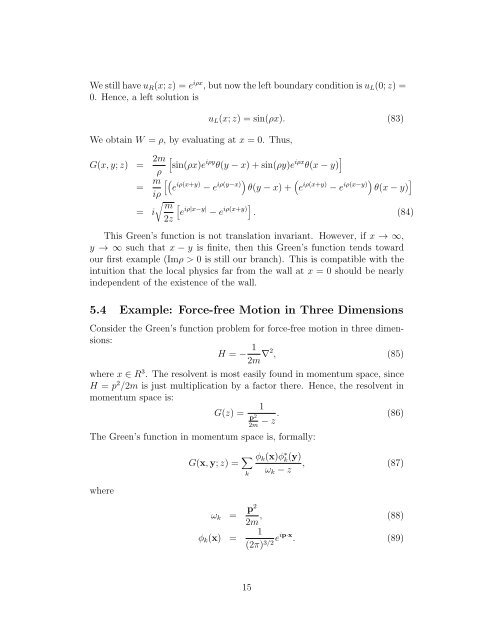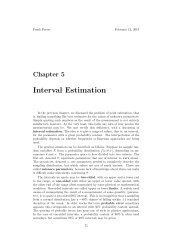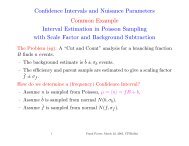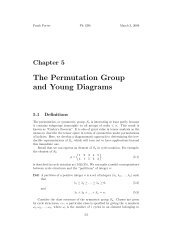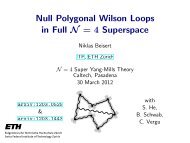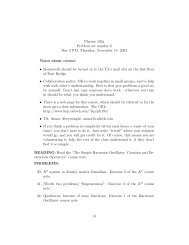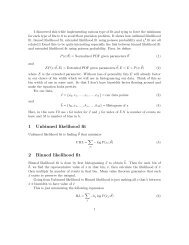1 Introduction 2 Resolvents and Green's Functions
1 Introduction 2 Resolvents and Green's Functions
1 Introduction 2 Resolvents and Green's Functions
You also want an ePaper? Increase the reach of your titles
YUMPU automatically turns print PDFs into web optimized ePapers that Google loves.
We still have u R (x; z) = e iρx , but now the left boundary condition is u L (0; z) =<br />
0. Hence, a left solution is<br />
We obtain W = ρ, by evaluating at x = 0. Thus,<br />
u L (x; z) = sin(ρx). (83)<br />
G(x, y; z) = 2m [<br />
sin(ρx)e iρy θ(y − x) + sin(ρy)e iρx θ(x − y) ]<br />
ρ<br />
= m [(<br />
e iρ(x+y) − e iρ(y−x)) θ(y − x) + ( e iρ(x+y) − e iρ(x−y)) θ(x − y) ]<br />
iρ<br />
√ m [<br />
= i e iρ|x−y| − e iρ(x+y)] . (84)<br />
2z<br />
This Green’s function is not translation invariant. However, if x → ∞,<br />
y → ∞ such that x − y is finite, then this Green’s function tends toward<br />
our first example (Imρ > 0 is still our branch). This is compatible with the<br />
intuition that the local physics far from the wall at x = 0 should be nearly<br />
independent of the existence of the wall.<br />
5.4 Example: Force-free Motion in Three Dimensions<br />
Consider the Green’s function problem for force-free motion in three dimensions:<br />
H = − 1<br />
2m ∇2 , (85)<br />
where x ∈ R 3 . The resolvent is most easily found in momentum space, since<br />
H = p 2 /2m is just multiplication by a factor there. Hence, the resolvent in<br />
momentum space is:<br />
1<br />
G(z) =<br />
p 2<br />
− z . (86)<br />
2m<br />
The Green’s function in momentum space is, formally:<br />
G(x, y; z) = ∑ k<br />
φ k (x)φ ∗ k(y)<br />
, (87)<br />
ω k − z<br />
where<br />
ω k = p2<br />
2m , (88)<br />
1<br />
φ k (x) = eip·x . (89)<br />
(2π) 3/2<br />
15


